
Rook
The rook is the second most powerful piece in chess! It is a long-range piece and is notorious for delivering back-rank checkmates!
Here is what you need to know about the rook:
The Rook
When a game begins, each side starts with two rooks. The rooks begin the game in the corners of the chessboard: White's rooks start the game on a1 and h1, while Black's rooks are located on a8 and h8.

The rook is considered a major piece (like the queen) and is worth five points. It is considerably more valuable than a pawn (one point), a knight (three points), and a bishop (also three points) is but less valuable than a queen (nine points).
How The Rook Moves
As mentioned, the rook is the second most powerful piece (behind the queen). The rook can move forward, backward or sideways, but cannot move diagonally (like a queen or a bishop). The rook can move up or down vertically on any file. In the following diagram, you can see the rook's potential moves highlighted on the e-file.
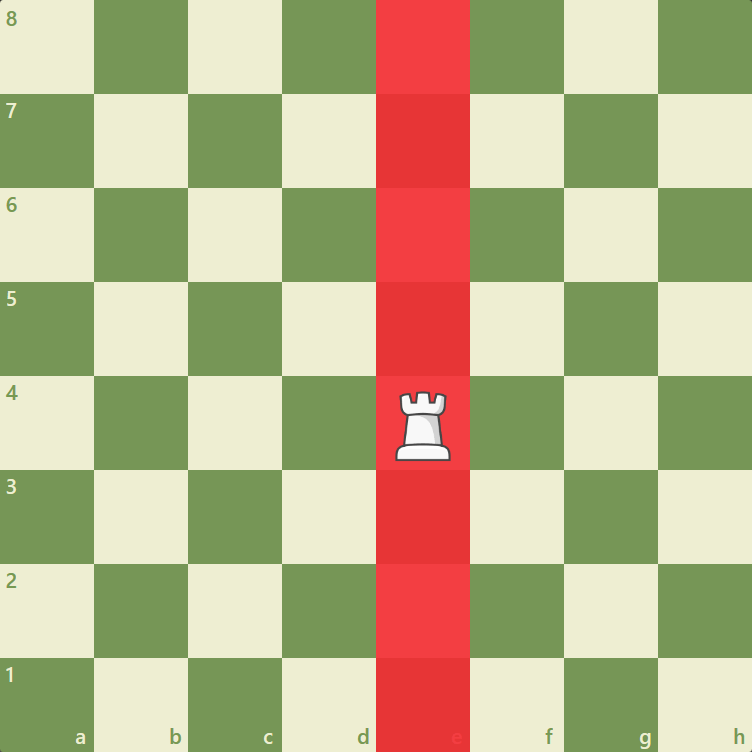
The rook can also move left or right horizontally on any rank. In the following diagram, you can see the rook's potential moves highlighted on the fourth rank.
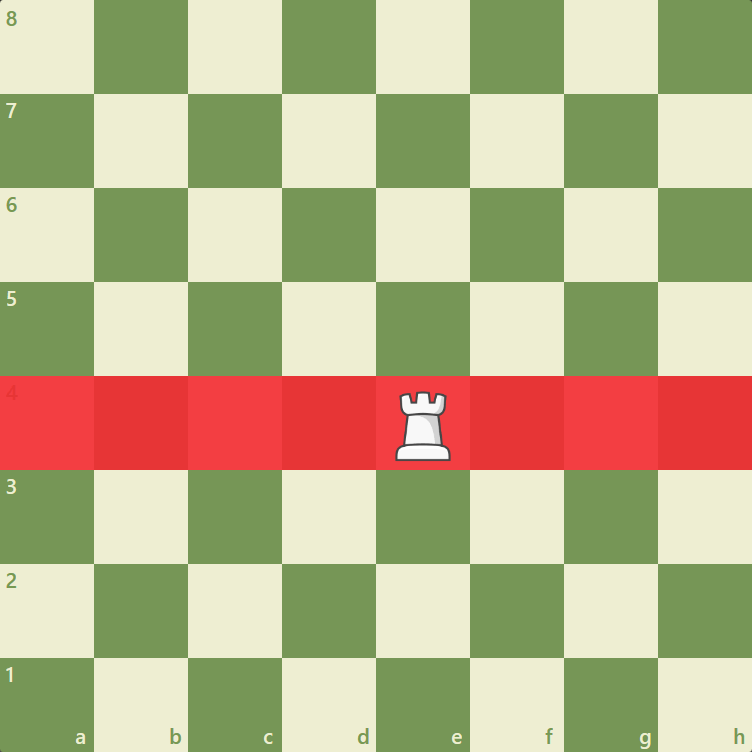
One way to remember how the rook moves is that the pattern looks like a plus sign (+).

The rook can move as many squares as it likes as long as it is not blocked by another piece or the square is not occupied. For this reason, rooks are effective when placed on open or semi-open files (because they are not obstructed by other pieces).
The rook can capture an enemy piece by moving to the occupied square. Please note that the rook cannot jump over pieces like a knight—if it is blocked (like in the starting position), then it cannot move!
Rook Checkmate And Back-Rank Mate
The rook can deliver lots of different kinds of checkmates, but here we will cover three of the most common rook checkmates: 1) a single rook mate, 2) a double-rook mate, and 3) a back-rank mate.
Unlike the bishop or a knight, a single rook can checkmate with the help of a king alone. In the following position, White has just played Rb8#! Please note that the white king on the f6-square takes away any forward moves from Black's king, while the rook takes away any moves on the eighth rank.
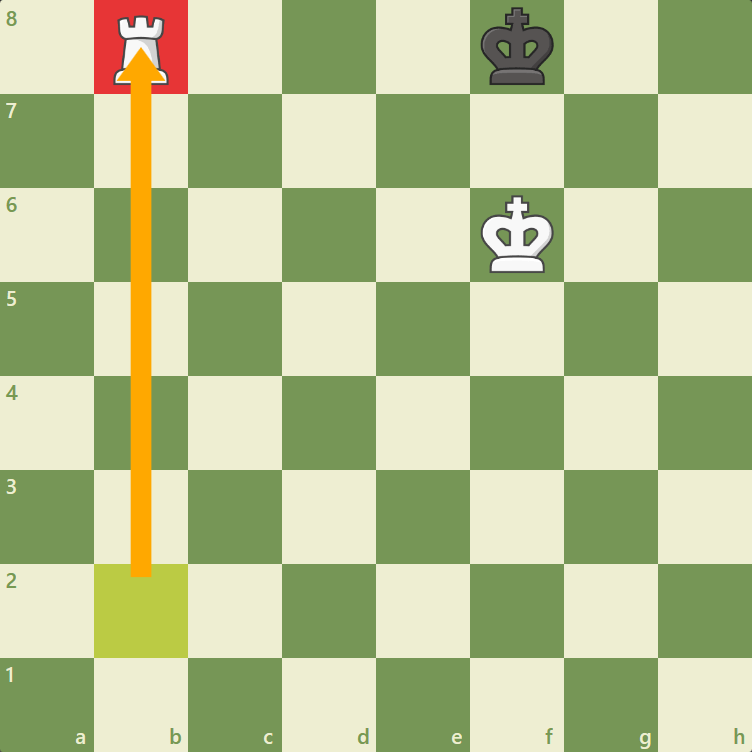
Two rooks can deliver checkmate against a lone king very easily. In the following position, White has just played Ra8#. Please note that the rook on b7 keeps the black king from moving forward, while the rook on a8 takes away any moves on the eighth rank.
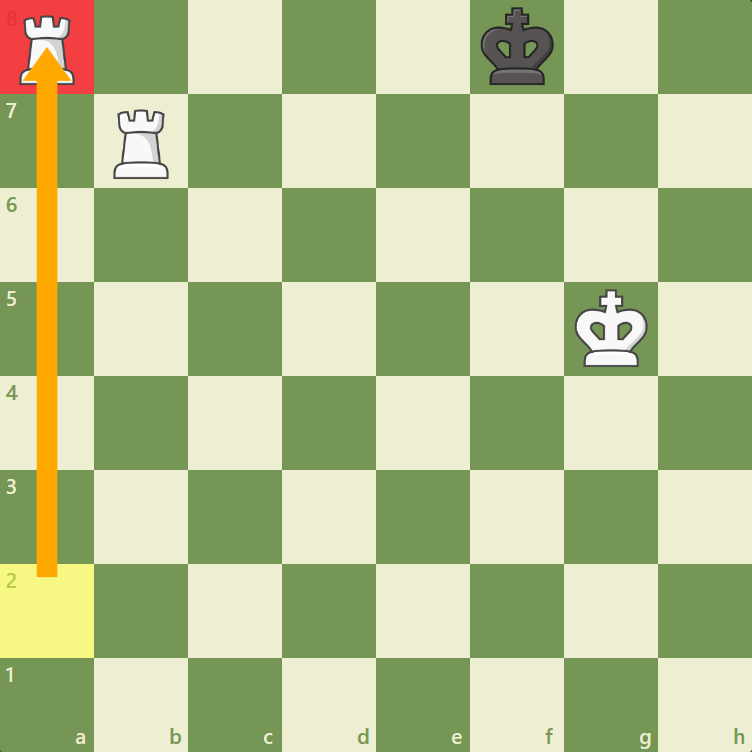
Another type of checkmate that the rook is notorious for is called a back-rank mate. A back-rank mate occurs when checkmate is delivered, you guessed it, on the back rank! Please note that the pawns in front of the king block any movement forward, while the rook takes away all squares on the eighth rank.
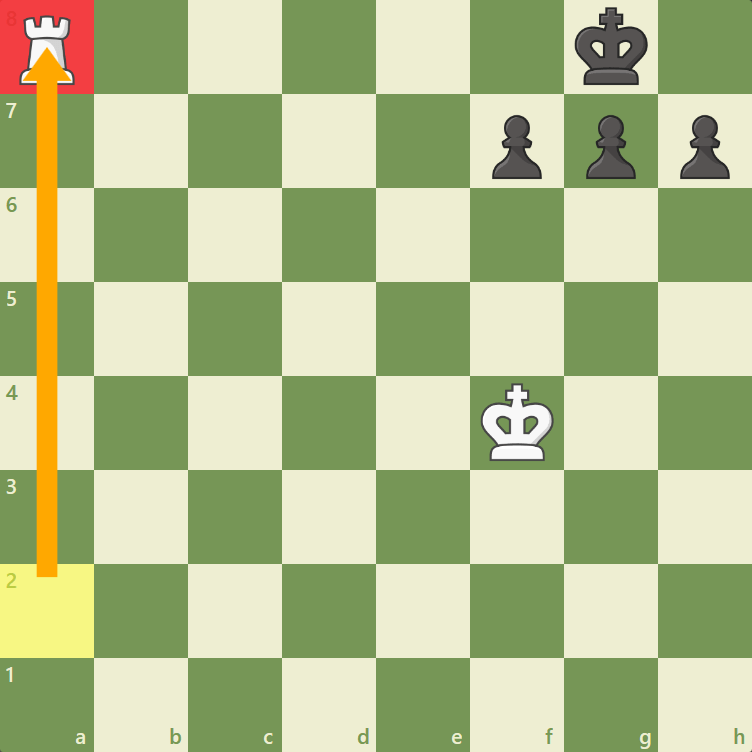
Test
Let's test you to see if you can recognize how a rook moves. In the following position, can White's rook on the e1-square capture Black's knight on the e4-square?
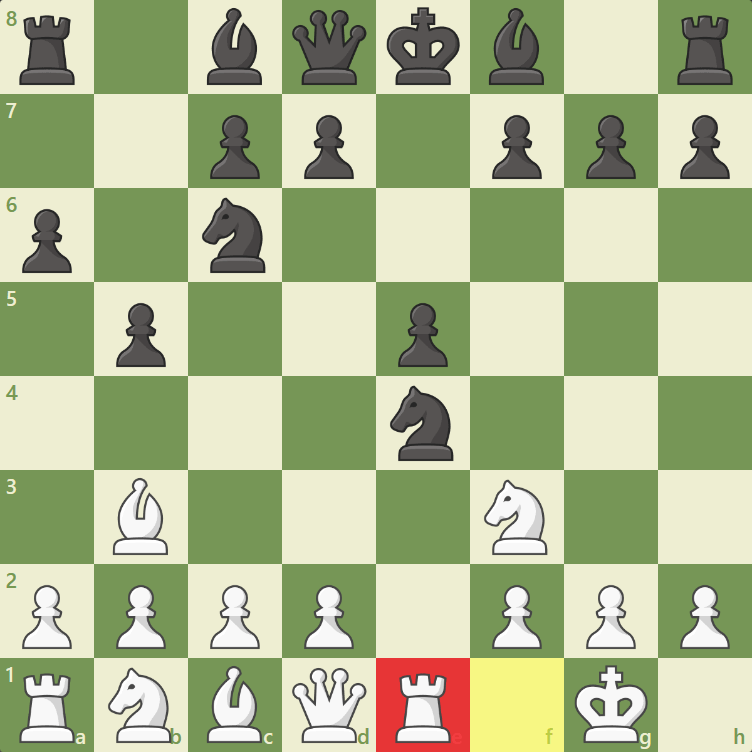
Yes, the rook can capture the knight on the e4-square! Let's try another one—can White's rook on the c1-square move to the c8-square?
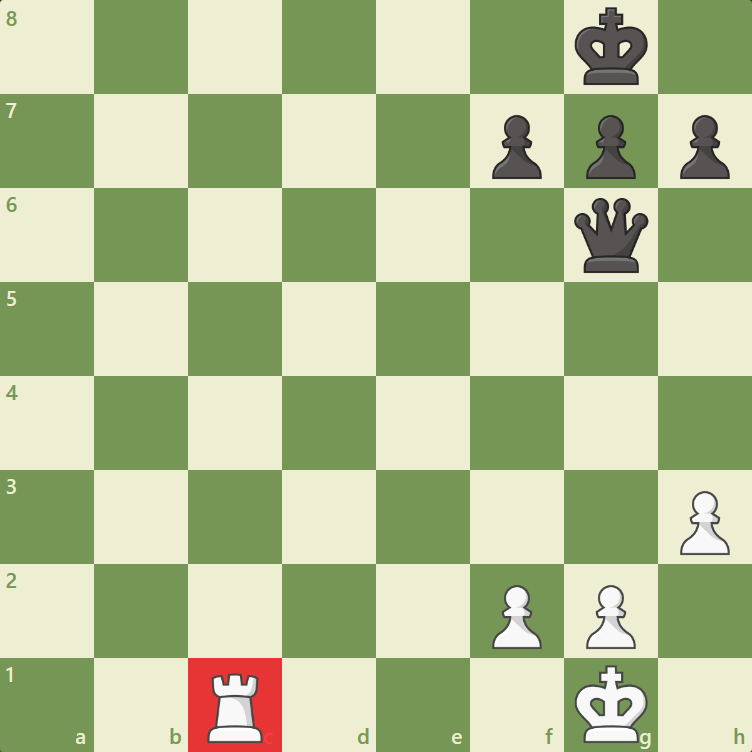
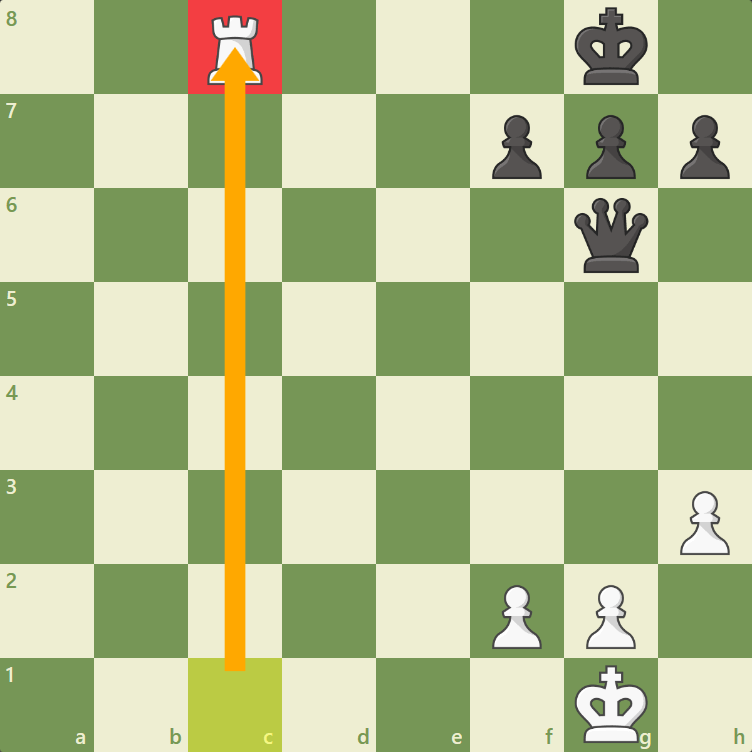
Conclusion
You now know where to place the rooks when a game is started, how much the rook is valued, how the rook moves, and how the rook contributes to several common checkmates! Enjoy your new knowledge of the rook, and may your rooks find many open files.
Watch the Video Lesson
Reading an article is a fantastic way to learn new material. For some people, watching a video lesson can be even more helpful! Check out the short video lesson below about the rook!







